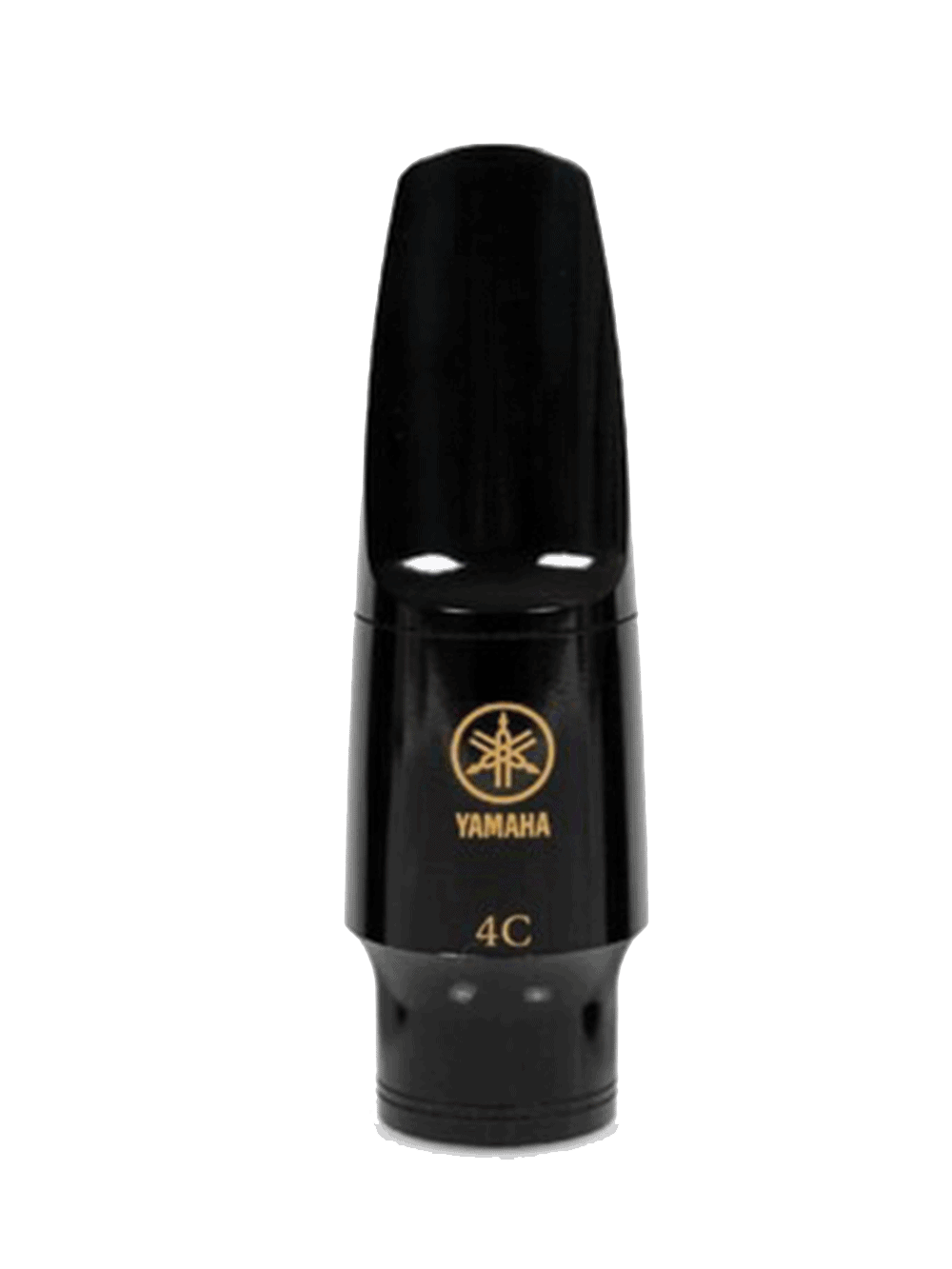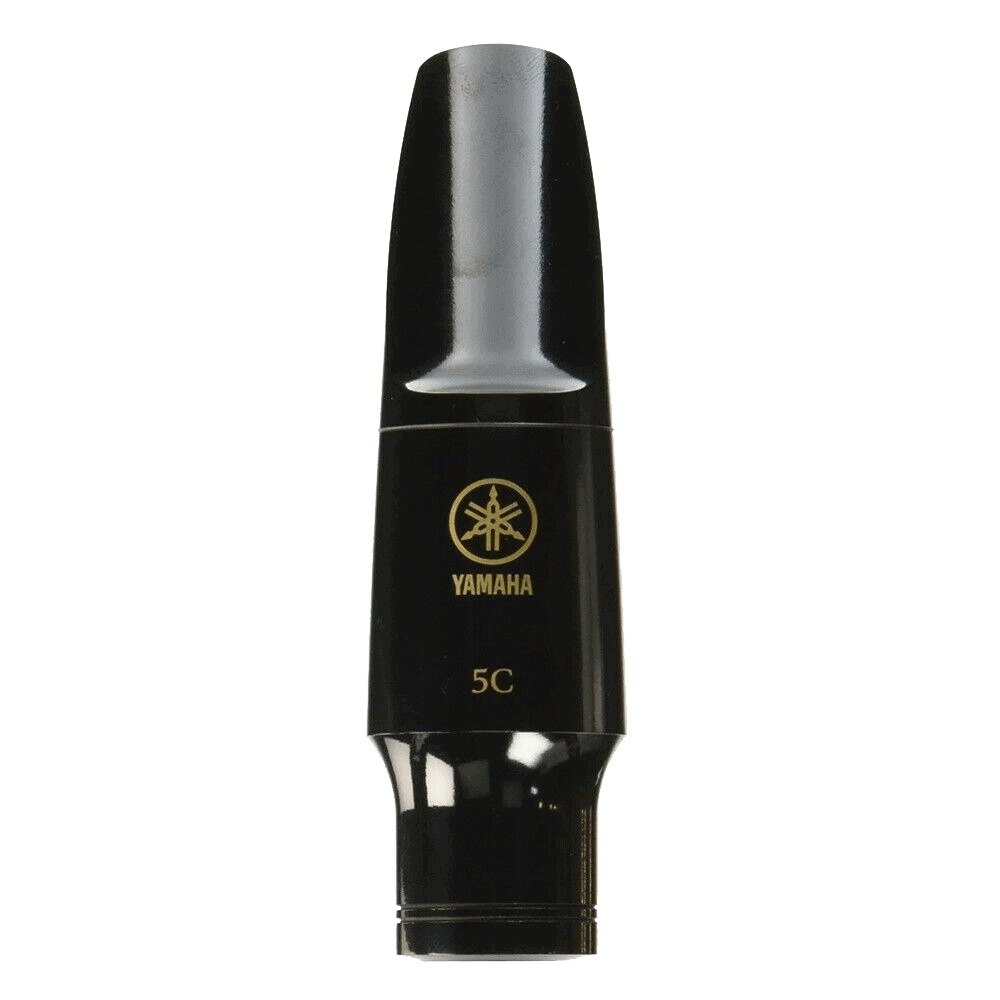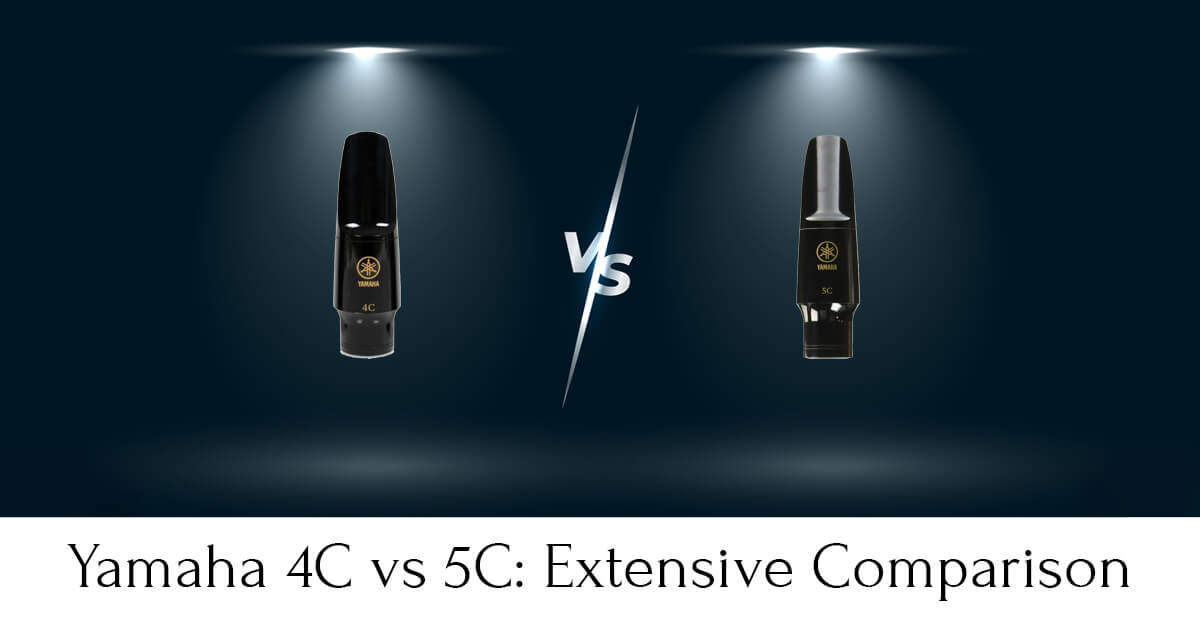Yamaha is undisputedly a great musical company with myriad instruments, accessories, and add-ons. And two of the most popular accessories they sell are the 4C and 5C mouthpieces.
So, what’s the difference between the two mouthpieces? And which one should you choose between the Yamaha 4C vs. 5C? Let’s delve into their details to find how you can make a choice.
Table of Contents
Yamaha 4C vs. 5C: Short Answer
If you’re looking for something that matches the skill level of beginners and pros alike, opt for the 4C. It easily enables you to achieve a clear, balanced, and concentrated tone in pretty much any octave. On the other hand, if you want to get a richer tone and more diverse colors, the 5C would be the better fit. With its excellent response and flexibility, it’s the ideal choice for soloists.
| Image | Product | Details | Price |
|---|---|---|---|
 |
Yamaha 4C | Achieves More Balanced Tones | Check Price |
 |
Yamaha 5C | Best for Soloists | Check Price |
The Full Comparison
Now, it’s a little tough to make an entire full comparison between the 4C and 5C mouthpieces as they come in all kinds of sizes, types, and that’s excluding the custom series (CM). However, the main characteristics are still the same, and that’s what we explore in this section.
Size
The Yamaha 4C and 5C mouthpieces have three models, soprano, alto, and tenor. But the 5C also has a baritone model.
The 4C’s soprano, alto, tenor have 1.20mm, 1.60mm, 1.70mm tip openings, respectively. Their facing lengths are 19mm, 23mm, and 24mm, respectively.
Compare that with the 5C’s soprano, alto, and tenor, with 1.25mm, 1.70mm, 1.80mm tip openings, respectively, and facing lengths of 19mm, 23mm, and 24mm, respectively. As for the baritone model, it has a 2.10mm tip opening and a whopping 28mm facing length.
What this means for the player is that there wouldn’t be a difference in vibration intensity between the two mouthpieces if you’re using the corresponding model size, as they have the same facing lengths. So, if you want more vibrations, opt for the larger model.
The difference would be in the airflow that enters the instrument, as the 5C models come with larger tip openings, which allows the player to control the amount of air that enters the instrument, and therefore gives them more control over the sound.
Both mouthpieces are available in ebonite (hardened rubber) but also have a plastic alternative for a more affordable price for budget-conscious shoppers.
Related Comparisons:
– The Selmer S80 vs. S90 Full Comparison
– Our In-Depth Vandoren AL3 vs. AL4 Comparison
– T25 vs. T20 Vandoren Mouthpieces Compared
Sound
If you’re looking for a wider range of tones and pitches, the 5C is definitely the way to go. Though the 4C is a lot easier to control and keep in tune, its small tip opening doesn’t leave much room for variation.
This is also the reason I’d recommend the 5C mouthpieces for jazz players, who can combine it with a metal ligature and half a drop in the reed strength that you usually use for a lively sound and enhanced playability.
Price
There isn’t a huge difference in price, but the mouthpiece is a part that sticks around for a lot longer than others, like reeds. So, generally, getting a 5C and using the appropriate reed to get the sound and control that you desire would be a much better investment in the long run than it would be to get a 4C and then upgrade later to a 5C.
Recommended: The best ligature for Yamaha 4C mouthpiece
FAQs
Which Mouthpiece Is Better for Beginners?
Generally speaking, beginners would benefit more from narrower tip openings as they’re easier to control and give you more consistency when it comes to intonation and ease of response.
What Benefits Do Wide Tip Openings Offer?
Wider tip openings are better for generating volume and projection. They enable the saxophonist to produce richer tones with easier vibrato. As long as they’re well-versed with playing the sax, that is.
Conclusion
So, when it comes to solos, color diversity, and the richness of tone, the Yamaha 5C is the better mouthpiece for you. However, if you’re a beginner or a pro that’s very concerned with the focus of tones and want a more balanced sound across all registers, you should opt for the Yamaha 4C.

